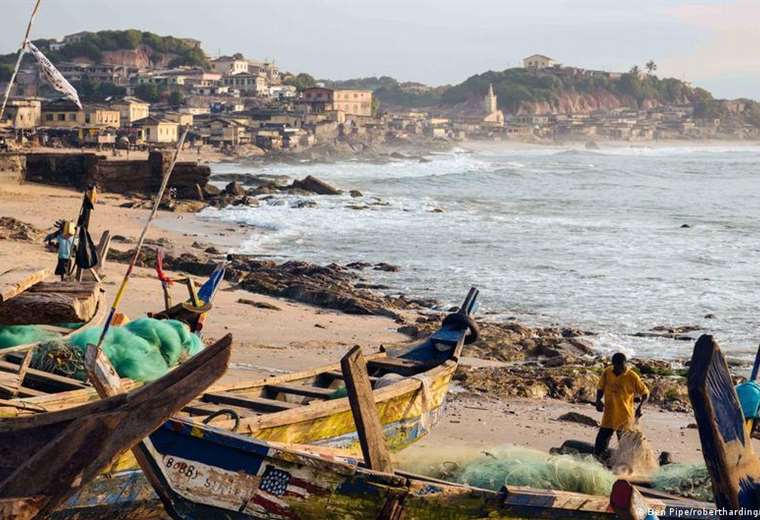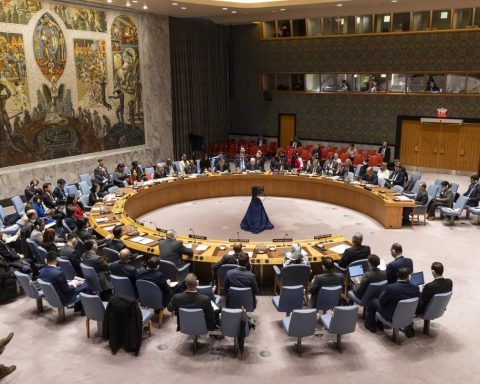July 21, 2022, 8:54 PM
July 21, 2022, 8:54 PM
A few scattered palm trees move in the sea breeze and stone ruins rise from the sand. The last remnants of a town besieged by the sea: the coastal town of Fuveme, in the Volta River region of Ghana, could soon be gone forever. The small lagoon town of Keta has already been reduced to an island, forcing many families to move inland.
Many of these small fishing villages on the Ghanaian coast are below sea level. Kwasi Appeaning Addo, expert in climate change from the University of Ghana in the capital, Accra, and a coastal change researcher: “The intensity of storm surges has increased lately, which is due to climate change. The waves are higher, the sea level is rising, these are natural factors driven by climate change that increase erosion,” Addo tells DW.
But not only nature, but also humans contribute to erosion: sand mining on beaches is illegal, but the ban is not enforced, says Addo. Another problem is the destruction of coastal vegetation, which is essential to combat erosion.
What measures is the government of Ghana taking? “They try to fight erosion with hard structures like groynes and dams,” Addo explains. But that’s not sustainable, he adds. “We have to rethink how we learn to deal with erosion instead of fighting it.”
In West Africa, the sea is eating up the interior of the country particularly quickly: “56 percent of the coastline of Benin, Ivory Coast, Senegal and Togo is exposed to an average erosion of two meters per year, which has a enormous impact,” says María Sarraf, director of Environment and Natural Resources projects in Africa. More must be done, Sarraf stresses in an interview with DW.
Accelerated sea level rise
To protect at least some of West Africa’s threatened coastal regions, the World Bank has launched a $220 million project that currently benefits six countries in the region. Among other things, the money is used to build dams and coastal defences, restore wetlands and fill in beaches.
Not only West Africa, but also other regions such as the Nile Delta in Egypt, the coasts of Kenya and East Africa, and even South African coastal cities such as Cape Town are exposed to the dangers of rising sea levels and therefore therefore, to stronger floods. According to the Intergovernmental Panel on Climate Change, the sea level around Africa has increased faster than the world average in the last thirty years.
More Western responsibility
“We need to know more about these weather systems so we can take more concrete action for the future,” said Callum Munday, a climate scientist at the University of Oxford. This would also include greater responsibility on the part of the West and investments in adaptation to climate change. Among other things, the money was to flow to the Global South through a climate repair fund, which is anchored in the 2015 Paris Climate Agreement but has barely materialized at annual global climate summits since then.
Africa contributes relatively little to global emissions, with just under 4 percent, but its population is more disadvantaged and economically more vulnerable, says the researcher, adding: “By 2050, the oceans are projected to rise by half a meter. It seems that there is still time, but it is a fallacy”.


















